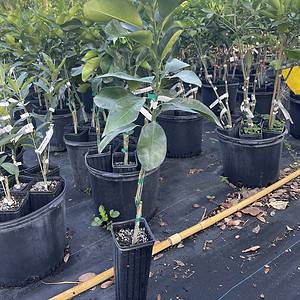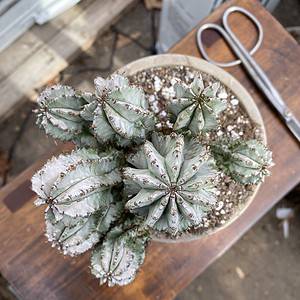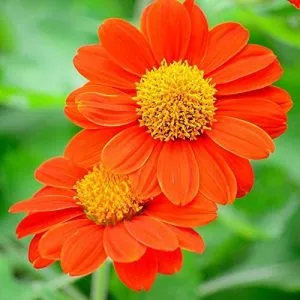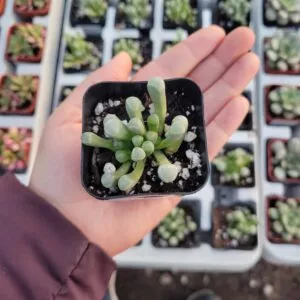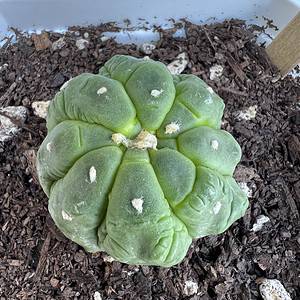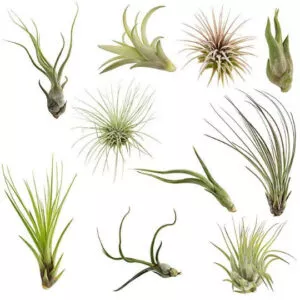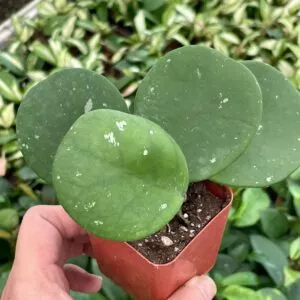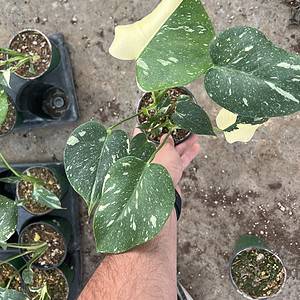No products in the cart.
Table of Contents
The Dianthus barbatus makes for a welcome addition to most spring gardens. The plant is low maintenance, and the flowers have a spicy clove scent. Best of all, your landscaping gets that cottage-style appeal.
Still, that is not all you find the Dianthus plants in different bloom colors from white to black. But more about this later in the varieties available. The flowers look amazing in floral arrangements and attract pollinators like hummingbirds and butterflies.
Hence, if you have not yet added any of these plants to your garden, choose the Sweet William to brighten up your outdoor living space. You can use it for border displays, container growing, rockeries to cutting gardens.
More About Dianthus Plants

Sweet William is a short-lived perennial or biennial. It grows with a height of two feet and is planted as an annual. The plant has pointed green leaves with blooms in different colors comprising five petals, making gorgeous cut flowers.
It produces blooms during the following flowering season in late spring. Still, some new cultivars bloom the same year when planted. Research also indicates that Sweet William plants are mildly toxic for humans and pets.
Some other common names are bunch pink, pinks, and bearded pink, and it belongs to the Caryophyllaceae family. The plant is native to Europe and Asia, and the genus Dianthus is sure to brighten up your home as a container plant or garden.

Sweet William Plants Care
To care for Dianthus is not too complicated as long as they have well-drained soil with filtered sun. These plants self-seed with optimal growing conditions. Thus, you can look forward to beautiful flowers every summer.
In stock Only 1 left in stock In stock
$21.99
Sold By:
Cacti and Exotica
CactiandExotica | Aloe hybrid—Purple haze
Only 11 available and it’s in 1 people’s basket Rated 4.98 out of 5 based on 59 customer ratings00
Sold By:
Cacti and Exotica
$70.00
Sold By:
Andy Nursery
$75.00Pumelo Grafted Citrus Tree 3 Feet Tall.
Sold By:
Andy Nursery
$15.00
Sold By:
JLP farms TN
1 Forythia shrub – 4” pot
Rated 4.85 out of 5 based on 602 customer ratings13
Sold By:
JLP farms TN
Planting Sweet William
Plant your Sweet William Dianthus up to 12 inches apart to provide adequate air circulation, but it can vary from one species to another. It helps to loosen the soil to a 12-inch depth and fill it with compost. Also, dig a hole twice the size of the root ball to place inside the hole.
Another helpful tip is to keep the top of the root ball level with the soil and tamp the soil around the base and water. The good news is that they are slow spreaders when you grow Sweet William and will not overstep its boundaries fast.
Best Soil For Dianthus Flowers

The soil Sweet William loves is a well-drained loamy as it can tolerate different types of soil but not wet ones. The soil pH levels can vary, but a neutral to minimum alkaline is best.
We have seen that some growers add some lime before planting these plants. With the right mixture, you can expect colorful blooms. Even growing in containers ensures that you provide your Sweet William flower with ample drainage to prevent root rot.
Lighting Needs Where to Grow Sweet William
As important as it is not to have poor drainage in your rock gardens, this herbaceous perennial loves full sun compared to shade. The Dianthus plant can thrive in light shade but become leggy and flop. While in warmer regions, some partial shade helps in the afternoon to help encourage additional blooming.
Watering Sweet William Plant

The Sweet William needs more water during the growing season, but please be careful not to overwater. As mentioned, when you plant Sweet William, spacing is vital as drainage, and when you overwater, it can lead to crown rot.
While Sweet Williams is drought tolerant to some extent, it still helps to check the soil moisture to see if your plants need water, and it also applies to container gardens. Still, if you find the rainfall is less, you may need to water more often when your plant is in full sun.
Fertilizing Sweet William Dianthus
Sweet Williams, you can fertilize using a 5-10-5 water-soluble fertilizer every eight weeks while your plants are still growing. We recommend following the instructions available on the label.
Temperature and Humidity

Plant care for carnations can vary from one species to another and range in the USDA hardiness zones three to nine. The Sweet William are cold-treated plants that can survive a light frost, but when temperatures become freezing, they die down and are treated as annual.
Neither do these perennials do well in high humidity as they go dormant and will not produce flowers! So, if you live in icy regions, we recommend taking cuttings or Sweet William seeds for overwintering. Make sure to check out our propagating notes below.
Pruning Dianthus spp
When it comes to your Sweet William in mass plantings, you can protect them from the winter cold by cutting back all the dead foliage and spent blooms.
But please do not do this in the fall; instead, let the dead leaves fall to the ground to provide a protective layer of mulch to insulate roots before removing the rest of the foliage.
If you grow Sweet William in containers, you can move them out of the wind, ice, and snow. Alternatively, you can deadhead flowers to encourage more blooming, as the perennial can bloom through to late summer.
In stock In stock In stock Only 1 left in stock
Free Shipping
$15.00
Sold By:
Sam's Curious Cultivars
Euphorbia Horrida, African Milk Barrel , 3-4in. Rooted Pup
Sold By:
Sam's Curious Cultivars
Free Shipping
$7.99
Sold By:
CZ Grain
Mexican Sunflower Seeds | 100+ Seeds | Attract Butterflies and Hummingbirds
Rated 4.60 out of 5 based on 156 customer ratings00
Sold By:
CZ Grain
$4.99
Sold By:
Plants by Stinky Boo
Baby Toes – Fenestraria rhopalophylla
Only 20 available and it’s in 2 people’s basket Rated 5.00 out of 5 based on 2 customer ratings00
Sold By:
Plants by Stinky Boo
$59.00
Sold By:
Kazumi Nursery
Astrophytum Lizard Skin T2-879
Sold By:
Kazumi Nursery
Propagating Sweet William
To propagate Sweet Williams, you can do these using cuttings. But as the plant is a short-lived perennial, we recommend buying cold-treated plants in spring to grow annually. Another method is to grow Dianthus from seeds.
Some technique is to sow the Dianthus seed in the ground in late spring or early summer when the last frost has passed. Furthermore, the follower prefers moist soil to help it germinate. Finally, as the seeds germinate, it does help to thin the plants out for adequate air circulation.
Alternatively, you can sow seeds indoors using cell packs six to eight weeks before the last frost in spring. You can then transplant them outside in late spring to summer.
Dianthus Varieties
Obtaining new plants or when you start seedlings is done with minimal effort when you have the Dianthus varieties. Here are some of our favorite carnations you can grow in your garden.
Dianthus grataniapolitensis – Cheddar Pinks

These varieties have the same growing conditions as Sweet William, with well-drained soil, and fertilize in the growing season with full sun. The flowering takes place during summer, and the blooms have a pink color with a fantastic fragrance. Another standout of these perennials is the blue-green foliage.
Dianthus chinensis – China Pink
![]()
The Chinese pinks do not do well in high heat or humidity. The carnation prefers moist soil but is not waterlogged with some afternoon shade. The perennials produce a flower in red, pink, or white native to China.
Dianthus superbus

For a carnation with a different type of flower, it develops fringed petals in a purple, white, or red color. The plant grows low to the ground and has a love scent. You can use the flower to brew tea, which is very tasty.
Common Diseases and Pests
The most common pests are slugs found in the garden and snails. The other concern is overwatering, leading to crown rot, rust, and root rot. With insufficient air circulation and high humidity, powdery mildew can form on the foliage and invites spider mites.
Frequently Asked Questions
The Dianthus barbatus is short-lived and grown as a biennial by sowing seeds in the summer to flower in the bloom time the following year. Nonetheless, they typically bloom in early summer, and the cut flowers can last long in the water.
Plants like Sweet Williams can return yearly when grown in the right environment with well-drained soil.
To ensure prolonged blooming, it helps to keep the soil moist but well-drained. Another helpful tip is to deadhead the spent flowers to encourage more blooms. But please refrain from removing the spent flower in late summer as it will help with self-seeding for your new plants to grow the following year.
Finding carnations is not difficult as they are not rare plants sold by local garden centers. But Plantly does have a wide variety of Dianthus plants here to buy.
Whether you want to buy, sell or simply reach out to other plant enthusiasts, Plantly is the right place to be!
-
Free Shipping$18.95Sold By: CTS Air Plants
In stock
Air Plants Tillandsia Collection of 10 Easy Houseplants
Only 100 available and it’s in 2 people’s basketSold By: CTS Air Plants -
$22.99Sold By: BubbleBlooms
In stock
Hoya obovata splash variegated, speckled with freckles, sweetheart heart-leaf hoya
Only 13 available and it’s in 1 people’s basketRated 4.81 out of 5 based on 279 customer ratings03Sold By: BubbleBlooms -
$6.00Sold By: Smoot's Farm
In stock
Succulent Succulent Haworthia Herbacea 2″ Pot Live Plant
Only 5 available and it’s in 1 people’s basketRated 4.89 out of 5 based on 27 customer ratings00Sold By: Smoot's Farm

